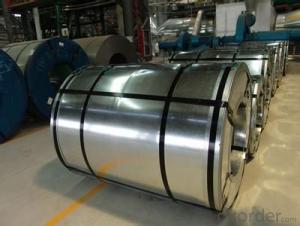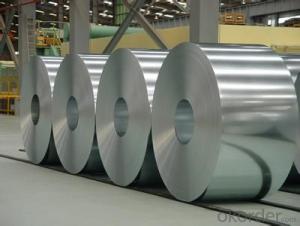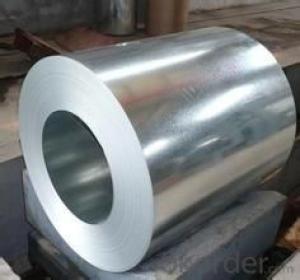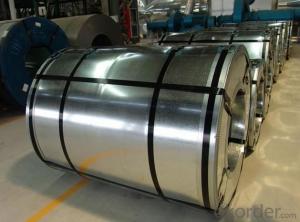Best Hot-dip Aluzinc Steel Building Roof Walls with Good price
- Loading Port:
- China main port
- Payment Terms:
- TT or LC
- Min Order Qty:
- 50 m.t.
- Supply Capability:
- 10000 m.t./month
OKorder Service Pledge
OKorder Financial Service
You Might Also Like
Best Hot-dip Aluzinc Steel Building Roof Walls with Good price
1. Description of Best Hot-dip Aluzinc Steel Building Roof Walls with Good price:
Hot-dip aluzinc steel structure is composed of aluminum-zinc alloy, consisting of 55% aluminum, 43% zinc and 2% at 600 ℃ silicon solidification temperature and composition, the entire structure is made of aluminum - iron - silicon - zinc, to form a dense quaternary crystals an alloy.
Hot-dip aluzinc steel has many excellent features: strong corrosion resistance, is three times the pure galvanized sheet; zinc surface with beautiful flowers, can be used as a building outside board.
Applications of hot-dip aluzinc steel:
1)Building: roof, walls, garages, soundproof walls, pipes and modular housing.
2)Automotive: muffler, exhaust pipes, wiper accessories, fuel tank, truck boxes, etc.
3)Appliances: refrigerator back, gas stove, air conditioners, microwave oven, LCD frame, 4)CRT-proof band, LED backlight, electrical cabinets, etc.
5)Farm: barn, sheds, silos, piping and other greenhouse.
2.Main Features of the Hot-dip Aluzinc Steel:
• Excellent corrosion resistance
• High temperature oxidation resistance
• Good manufacturability
•Cost-effective
3.Hot-dip Aluzinc Steel Images

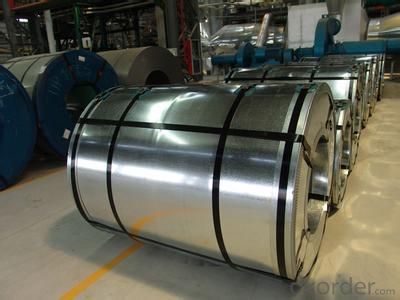
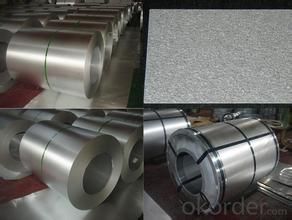
4.Hot-dip Aluzinc Steel Specification
AVAILABLE SPECIFICATION
HOT-DIP ALUZINC STEEL COILS | |
THICKNESS | 0.16mm-3.5mm |
WIDTH | 1250mm MAX |
COATING MASS | 30g/ m2-185 g/ m2 |
SPANGLE | Regular Spangle, Minimized Spangle, Zero Spangle |
SURFACE TREATMENT | Chromated / non-chromated, Oiled / non-oiled, Anti Finger Print |
COIL INNER DIAMETER | 508mm or 610mm |
5.FAQ of Our Steel
We have organized several common questions for our clients,may help you sincerely:
1.What advantages does your company have?
Cement : Annual capacity of 400 million tons, No. 1 in the world
Composite Materials — Rotor Blade: Annual production capacity of 15,000 pieces, No.1 in China, Top3 worldwide
Commercial concrete: Annual capacity of 0.35 billion cubic meters, No. 1 in the world.
Refractory Material: Annual capacity of 40,000 tons casting refractory, No.1 in the world.
2.What advantages do your products have?
Firstly, our base material is of high quality, Their performance is in smooth and flat surface,no edge wave ,good flexibility.
Secondly, high quality zinc ingoats, 97.5% zinc,1.5% silicon,1% others, the same zinc coating measured by metal coating thickness or by zinc weight
Thirdly, high precision: Tolerance strictly according to ASTM or JISG standard even more rigid.
We have full stes of testing equipment(for t best, cupule,chromatism,salt spray resistance, etc) and professional engineers.
- Q:a picture of the atomic structure of carbon steel
- This is actually a quite complex question... The atomic arrangement in steels can be controlled over a pretty wide range of different structures. This is really the fundamental reason why steel is such a commonly used material. The different atomic structures produce different physical properties so metallurgists have developed many different processes to control the atomic structure to get the properties they want. One simple answer is that Fe is BCC, body centered cubic at room temperature at equilibrium conditions. When you heat Fe up, it transforms to FCC, face centered cubic. If you continue heating Fe, it goes back to BCC, then it melts. The addition of C makes these structures (and the transformation temperatures) different. Deviating from equilibrium conditions by, for example, cooling very quickly (quenching) creates different atomic structures (one of the most important is known as martensite). Depending on how much C is in the steel, you can also have two different atomic structures (two different phases) present in equilibirum, for example, pearlite which is a mix of alpha Fe (BCC) and iron carbide Fe3C (orthorombic crystal structure). So... you need to think a little more about exactly what you want a picture of. I hope this helps
- Q:What are the dimensions of steel coils used in the pipeline industry?
- The dimensions of steel coils used in the pipeline industry can vary depending on the specific application and requirements. However, common dimensions for steel coils used in the pipeline industry typically range from 0.5 to 3.0 inches in thickness and 24 to 60 inches in width. The length of the coils can vary as well, with standard lengths often ranging from 100 to 200 feet. These dimensions are designed to meet the necessary strength and durability requirements for pipeline construction and transportation of various fluids and gases. It is important to note that these dimensions can vary depending on the specific project and industry standards.
- Q:How are steel coils inspected for coil set?
- Steel coils are inspected for coil set using a variety of methods and equipment. Coil set refers to the curvature or shape of the coil, which can impact its performance and usability in various applications. One common method of inspecting steel coils for coil set is through visual inspection. Experienced operators or inspectors carefully examine the coils for any visible deformities or irregularities in their shape. This can be done by unrolling a portion of the coil and checking for any signs of buckling, twisting, or unevenness. Visual inspection is a straightforward and cost-effective way to identify obvious coil set issues. In addition to visual inspection, more advanced techniques are also used to accurately measure and quantify coil set. One such method is the use of a straight edge or a template. The straight edge is placed along the length or width of the unrolled portion of the coil, and any gaps or deviations from the straight edge indicate the presence of coil set. This method provides a more precise measurement of the extent and severity of the coil set. Another common technique is the use of specialized tools such as a non-contact laser measurement system. This system utilizes lasers to project a line on the surface of the coil and measures the distance between the line and the coil. Any variations in this distance indicate the presence of coil set. This method is highly accurate and provides detailed data about the coil's shape and curvature. Other methods may include using mechanical devices such as rollers or tensioners to unroll and measure the coil's shape. These devices apply controlled pressure to the coil to straighten it out, and any resistance or deviations encountered during the process are indications of coil set. Overall, the inspection of steel coils for coil set involves a combination of visual examination and precise measurement techniques. These methods help identify and quantify any deformities or irregularities in the coil's shape, allowing manufacturers and customers to make informed decisions about the usability and quality of the steel coils.
- Q:What are the common manufacturing defects in steel coils?
- There are several common manufacturing defects that can occur in steel coils, including surface imperfections such as scratches, pits, or dents, dimensional inconsistencies such as uneven thickness or width, edge defects like burrs or cracks, and internal defects such as inclusions or voids. These defects can impact the quality and performance of the steel coils, and manufacturers strive to minimize these issues through quality control measures and inspections.
- Q:What is the purpose of coating steel coils?
- The purpose of coating steel coils is to provide protection against corrosion, enhance durability, and improve the aesthetic appearance of the steel. Coatings create a barrier between the steel surface and the environment, preventing moisture, chemicals, and other corrosive elements from reaching the metal. Additionally, coatings can offer additional benefits such as heat resistance, UV protection, and improved paint adhesion, making the steel coils suitable for a wide range of applications in various industries.
- Q:I'm analysing horse stirrups and would like to know the disadvantages to stainless steel? - thanks
- Stainless Steel has more advantages than disadvantages. But u asked for disadvantages so they r as follows i've given common disadvantages more can be found on Google. Disadvantages of Stainless Steel: Stainless steel tends to scratch and dent. Food, grease and fingerprints show very clearly on stainless steel, making frequent wiping and cleaning a necessity. High initial cost Difficult to fabricate, or in other words, it is not as malleable as other metals, say iron, and hence if not fabricated properly, results in costly re-work. Difficult to weld High cost of polishing etc. i.e. adding finishing touches for the market. there are advantages more than disadvantages. But u asked for disadvantages that's why i have given only disadvantages of stainless steel Hope what u want u got.
- Q:What are the challenges in coil recoiling?
- Coil recoiling, also known as coil winding, can pose several challenges depending on the specific application and requirements. Some of the common challenges in coil recoiling include: 1. Precision and accuracy: Achieving precise and accurate winding is crucial for optimal coil performance. Maintaining consistent tension throughout the winding process, ensuring proper alignment, and controlling the speed are essential to avoid variations in the coil's electrical properties. 2. Wire management: Handling the wire during the recoiling process can be challenging. The wire may be delicate, prone to tangling, or have specific handling requirements, such as being magnetically or thermally sensitive. Proper wire management techniques, such as tension control, wire guide systems, and spooling mechanisms, need to be employed to prevent wire damage and ensure uniform winding. 3. Space constraints: In many applications, coils need to fit within specific space limitations. Designing and winding coils to fit compact spaces can be challenging, especially when considering the required number of turns, wire size, insulation, and any additional components or structures that may need to be incorporated. 4. Material selection: Selecting the appropriate wire and insulation material is crucial for coil performance and longevity. Factors such as electrical conductivity, thermal properties, mechanical strength, and chemical resistance need to be considered to ensure the coil can withstand the operating conditions and environmental factors it will be exposed to. 5. Heat dissipation: Coils often generate heat during operation, especially in high-power applications. Efficient heat dissipation is essential to prevent overheating and ensure the longevity of the coil. Designing the coil with proper ventilation, utilizing cooling mechanisms, or integrating heat sinks are some of the techniques used to address this challenge. 6. Quality control: Ensuring consistent quality in coil recoiling can be challenging due to factors such as variations in wire properties, operator skill, equipment calibration, and environmental conditions. Implementing robust quality control measures, such as conducting regular inspections, performing electrical tests, and monitoring process parameters, is necessary to maintain consistent coil performance. Overall, coil recoiling requires attention to detail, precision, and adherence to specific requirements to overcome the challenges and produce high-quality coils that meet the desired performance criteria.
- Q:How are steel coils used in the production of agricultural equipment?
- Steel coils are used in the production of agricultural equipment as they serve as the primary material for manufacturing various components such as frames, brackets, and structural supports. These coils are shaped, cut, and welded to create the required parts, which are then assembled to form agricultural machinery like tractors, plows, and harvesters. The strength and durability of steel make it an ideal choice for withstanding the demanding conditions and heavy workloads typically associated with agricultural equipment.
- Q:How are steel coils inspected for color consistency?
- To ensure that the final product meets the desired specifications, various methods are used to inspect the color consistency of steel coils. Visual inspection, which involves trained inspectors examining the coils under controlled lighting conditions, is one common method. By comparing the color of each coil to a standard color chart or a previously approved sample, any variations in color can be detected and noted for further analysis. In addition, objective color measurement can be achieved using advanced technologies such as spectrophotometers. These devices measure the reflective properties of the steel surface using light, allowing for precise color analysis. The obtained color data is then compared to the specified color range, and any deviations are flagged for further investigation. Furthermore, some manufacturers may opt for automated color measurement systems, such as colorimeters or color cameras, to inspect steel coils for color consistency. These systems provide quick and accurate assessments of the color of each coil, ensuring uniformity throughout the entire batch. Overall, the inspection process for color consistency in steel coils combines visual inspection, spectrophotometry, and automated color measurement systems. This comprehensive approach guarantees that the steel coils meet the required color standards, resulting in consistent and high-quality products for customers.
- Q:What are the different grades of steel used in coils?
- There are several different grades of steel used in coils, including low carbon steel, medium carbon steel, high carbon steel, and alloy steel. Each grade has specific properties and characteristics that make it suitable for various applications, such as automotive, construction, or manufacturing industries. The grade of steel chosen for coil production depends on factors such as strength requirements, formability, corrosion resistance, and cost considerations.
1. Manufacturer Overview |
|
|---|---|
| Location | |
| Year Established | |
| Annual Output Value | |
| Main Markets | |
| Company Certifications | |
2. Manufacturer Certificates |
|
|---|---|
| a) Certification Name | |
| Range | |
| Reference | |
| Validity Period | |
3. Manufacturer Capability |
|
|---|---|
| a)Trade Capacity | |
| Nearest Port | |
| Export Percentage | |
| No.of Employees in Trade Department | |
| Language Spoken: | |
| b)Factory Information | |
| Factory Size: | |
| No. of Production Lines | |
| Contract Manufacturing | |
| Product Price Range | |
Send your message to us
Best Hot-dip Aluzinc Steel Building Roof Walls with Good price
- Loading Port:
- China main port
- Payment Terms:
- TT or LC
- Min Order Qty:
- 50 m.t.
- Supply Capability:
- 10000 m.t./month
OKorder Service Pledge
OKorder Financial Service
Similar products
New products
Hot products
Hot Searches
Related keywords
